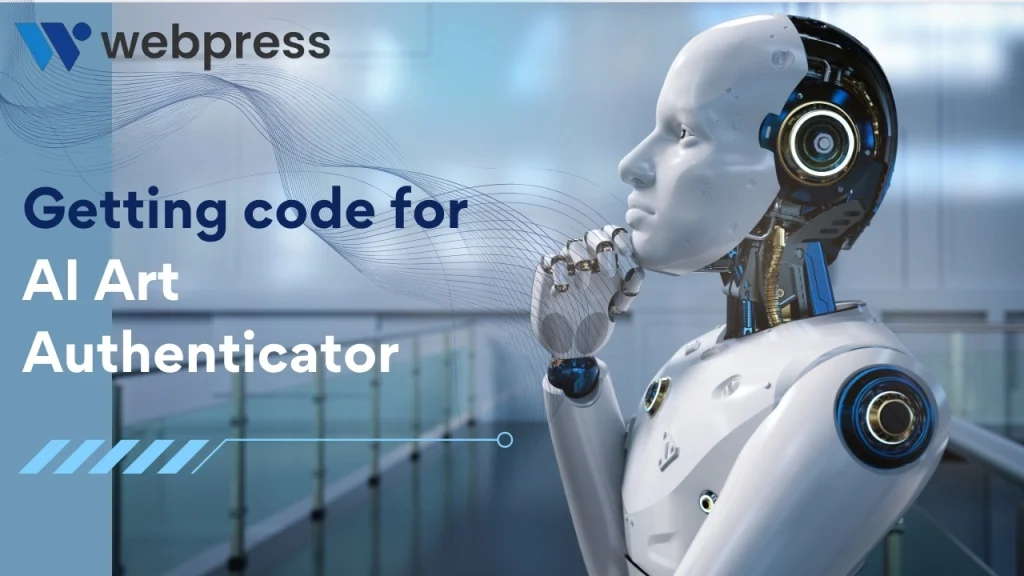Lately, the conjunction of technology and art has raised a question: How can human- or machine-generated art be distinguished? As collectors, artists and scientists ponder the question, high-tech image makers are taking an ever higher profile: Where does digital art come from? That’s where basic AI art authentication coding steps in. This blog explores how AI can help identify the origin of art, the principles behind it and even guides you through a sample code to get started with building your own AI art authenticator.
Why Verifying Artwork Is Crucial in Today’s AI-Driven World
Art authentication has always played a vital role in preserving cultural heritage, maintaining market value and validating artistic authorship. But the digital revolution has added layers of complexity. Today, anyone with access to online tools can create ultra-realistic images using artificial intelligence, making it harder than ever to separate originals from imitations.
With AI-generated visuals flooding the internet, traditional authentication methods no longer suffice. We need smarter solutions, automated, data-driven ones to keep up.
The Role of AI in Art Verification
Using machine learning, developers can now create programs that analyze the texture, patterns, brush strokes, and pixel structure of an image to assess its authenticity. AI-powered tools are trained on vast datasets of artwork, both real and AI-made to detect subtle differences that the human eye may miss.
For instance, a deep learning model can learn what makes Van Gogh’s style unique, then compare new pieces to this signature pattern to determine if it’s genuine or synthetic.
What Is Basic AI Art Authentication Coding?
Simply put basic AI art authentication coding refers to writing programs usually in Python that can evaluate artwork based on training from labeled image datasets. These datasets might include known human-created works and AI-generated art for comparison.
With time, the algorithm becomes able to make wise decisions based on composition, symmetry, contrast and texture.This type of validation does not guarantee 100% correctness but immensely limits the guesswork.
It serves as a helpful tool in academic research, marketplace verification and digital rights management.
What You Need to Build an AI Art Authenticator
Creating a simple AI-based tool involves several components:
1. Dataset Collection
You’ll need a large dataset with labeled images, some created by humans and others generated by AI. Datasets from platforms like Kaggle, Wikimedia or AI art tools can be useful.
2. Image Preprocessing
Before feeding images to the model, you’ll resize, normalize and maybe even apply filters to highlight key features.
3. Model Selection
Popular models include Convolutional Neural Networks (CNNs) for their strong performance in image recognition.
4. Training and Validation
Split your data and let the model learn from the training set, while the validation set helps test accuracy.
5. Deployment
You can deploy the model in a simple web app or as a command-line tool for personal use or public demonstration.
Applications of AI Art Identification
Tools like these are becoming the future of Art Recognition online. Platforms selling NFTs or digital art can implement them to screen works before listing. Galleries may use them to track digital coining. Even individual artists can use these tools to verify that their unique style hasn’t been imitated or misused by others.
For instance, an AI art identifier tool could flag whether a piece submitted to an online portfolio was likely generated or modified by AI providing useful insights to curators and buyers.
Challenges in AI-Powered Art Authentication
While the concept is exciting, there are some limitations to be aware of:
- False Positives: Highly stylized human work can sometimes resemble AI-generated pieces.
- Continuous Evolution: As ai-generated art improves, so must the models trying to detect it.
Building a robust system requires ongoing model updates and extensive training on diverse datasets.
Ethical Considerations in Art AI
It’s not just about code and accuracy. Developers and users must also consider:
- Artist consent: Should artists be asked before their work is used to train models?
- Bias: Is the tool favoring certain artistic traditions over others?
- Transparency: Can users trust what the model says without knowing how it works?
Integrating ethics into your art authentication tool design is not optional—it’s essential for trust and fairness.
The Future of AI in Art Validation
- Blockchain integration for verified provenance.
- Real-time image scanning for marketplaces.
- Voice/image/gesture-based interfaces for museum-level applications.
With the foundation of basic AI art authentication coding, these technologies become more accessible for developers, artists, and institutions alike.
Final Thoughts: Merging Code with Creativity
As technology evolves, so does the need for digital accountability. Whether you’re an artist, buyer, or coder, tools built using basic AI art authentication coding can help ensure transparency in an increasingly digital art landscape.
While no system is foolproof, combining machine learning and creativity opens the door to smarter, fairer and more secure art ecosystems. Whether you’re verifying art for a gallery or building a personal project, the power to create change lies in your code.
Start small. Train smart. Build with purpose. The future of art verification is already here and you can be a part of shaping it.





